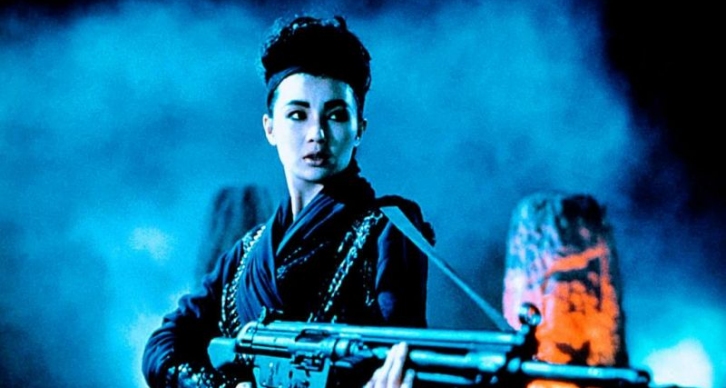★★★★★
“The missing link between Psycho and Halloween?”

 I’m quite serious about the above. In 1959, Hitchcock’s classic psycho-thriller, which gave an entire genre its name, showed a normal, self-confident woman falling prey to a psychotic serial killer, while John Carpenter’s Halloween, also now a classic, had its heroine fighting off menace Michael Myers. In between these two iconic movies, there is not much that is worth mentioning. Some final girls in Italian gialli maybe managed to survive, I guess – but there’s nothing in big screen thrillers that the average Joe or Jane would be able to name. Except… This movie, in which blind heroine Susy Hendrix (Hepburn) is able to see through the ruses of three gangsters, fight them off, and even win in a final confrontation against evil-as-evil-can-be psycho Mr. Roat (a very young Arkin – gosh, this guy is now 86 at the time of writing).
I’m quite serious about the above. In 1959, Hitchcock’s classic psycho-thriller, which gave an entire genre its name, showed a normal, self-confident woman falling prey to a psychotic serial killer, while John Carpenter’s Halloween, also now a classic, had its heroine fighting off menace Michael Myers. In between these two iconic movies, there is not much that is worth mentioning. Some final girls in Italian gialli maybe managed to survive, I guess – but there’s nothing in big screen thrillers that the average Joe or Jane would be able to name. Except… This movie, in which blind heroine Susy Hendrix (Hepburn) is able to see through the ruses of three gangsters, fight them off, and even win in a final confrontation against evil-as-evil-can-be psycho Mr. Roat (a very young Arkin – gosh, this guy is now 86 at the time of writing).
The story: gangsters Talman (Crenna – best known as Rambo’s boss) and Carlino (Jack Weston) meet the gangster Roat, previously unknown to them, in an empty apartment. Roat is obviously working for – or may even be the boss of – a drug-smuggling ring. A doll that was used to smuggle drugs had been given, for later collection, by their colleague Lisa (Samantha Jones) to an innocent photographer Sam Hendrix (Zimbalist). Sam lives in this apartment, with his blind wife Suzy (Hepburn). As a quick inspection of the flat didn’t lead to the doll, Roat recruits, or more accurately. blackmails the two men into helping him.
As Sam is away for the week-end, the three men are going to put on a kind of play for Suzy. The intention is making her believe Sam is suspected of murder of (the already dead) Lisa, putting psychological pressure on Suzy to reveal the whereabouts of the doll. Fortunately, Suzy may be blind but she is not stupid. Very soon, she notices little things in the behaviour of the men that suggest something else is going on. With help from a young girl who lives in the flat above (Julie Herrod), her suspicions are confirmed and she suddenly realizes she is on her own against three men. The worst of whom is Roat, not just a normal criminal, but who enjoys killing – and from the get-go had planned to kill everyone off, once he gets what he wanted.
Oh, my… ! This movie was (and IMHO still is) a real nail-biter. Based on a play by Frederick Knott who also provided the basis for Hitchcock’s Dial M for Murder (1953), the movie very much breathes Hitchcock’s air and makes good use of the master’s famous “suspense” techniques, in which the audience knows more than the movie’s protagonist. By this method, very special tension arises, as the viewer constantly wonders what will happen when the hero/ine finds out, and how s/he will escape the situation. Of course, this works much better when you have real danger imperilling the central character, so you can worry about them, and get caught up in the web of “suspense”.
For this to work, you need a character the audience likes, feels for and identifies with. In a Hitchcock movie, that might be your average, normal guys like James Stewart or Cary Grant, or later, much less lucky female characters like Janet Leigh or Tippi Hedren. There is no doubt that Audrey Hepburn’s casting here was a stroke of genius; she was at that time probably the most likable and beloved Hollywood star. Having her play a blind woman even contributed to the sympathy and fear felt for her, in a movie that was a very unusual genre for Hepburn.
Until then, she had been seen mainly in sweet love stories like Roman Holiday (1953) and Sabrina (1954), or comedy-thrillers like Charade (1963) with Cary Grant, or How to Steal a million (1966) with Peter O’Toole. She had broken through as a serious actress with The Nun’s Story (1959) and Breakfast at Tiffany’s (1961). She had even been cast by Hitchcock in an adaptation of Henry Cecil’s novel, No Bail for the Judge. But other commitments, qualms about a rape scene in the script, and a pregnancy combined to scupper her involvement and, eventually, the movie itself, which infuriated the master of suspense. So Hepburn had never previously played in a movie like this one.
 Wait Until Dark is a dark, almost nihilistic thriller. This time, Hepburn’s heroine is all on her own, and if she isn’t able to put the puzzle pieces together and use her own wits, she will end up dead like poor Suzy in her cupboard. There is no Cary Grant or George Peppard coming to the heroine’s rescue. Even the not unsympathetic Crenna isn’t able to help. The gloves are truly off this time. It was kind of a gamble. There is a tradition of blind people in thrillers now; to name just some, Jennifer 8 (1992), Blink (1993), In Darkness (2018), or home-invasion thrillers e. g. Jodie Foster in Panic Room (2002). But these genres are relatively new, and not that often used then: 23 Paces To Baker Street (1956) and The Spiral Staircase (1945) with its deaf-mute heroine come to mind.
Wait Until Dark is a dark, almost nihilistic thriller. This time, Hepburn’s heroine is all on her own, and if she isn’t able to put the puzzle pieces together and use her own wits, she will end up dead like poor Suzy in her cupboard. There is no Cary Grant or George Peppard coming to the heroine’s rescue. Even the not unsympathetic Crenna isn’t able to help. The gloves are truly off this time. It was kind of a gamble. There is a tradition of blind people in thrillers now; to name just some, Jennifer 8 (1992), Blink (1993), In Darkness (2018), or home-invasion thrillers e. g. Jodie Foster in Panic Room (2002). But these genres are relatively new, and not that often used then: 23 Paces To Baker Street (1956) and The Spiral Staircase (1945) with its deaf-mute heroine come to mind.
Also, would fans of Hepburn accept her in such a role? A cold, chilling thriller? Her husband, and producer of the movie, Mel Ferrer (himself a former film star whose fame was fading, though he stayed in the business as a successful producer) wasn’t quite sure it would work. But he convinced Audrey, who wasn’t nearly as confident as many believed her to be, to accept the part. But it worked really well. Director Terence Young was a great admirer of Hitchcock’s techniques and had already successful applied them to his James Bond movies Dr. No (1962), From Russia with Love (1963) and Thunderball as well as WWII thriller Triple Cross (1966). Together with Henry Mancini’s highly effective soundtrack, the movie creates an atmosphere of claustrophobic doom around the sympathetic heroine.
In a way, the film somewhat ended the career of Hepburn, as at the same time it started the career of Arkin – though he had some way to go before achieving the status he has nowadays. After this movie, the already rocky marriage between Hepburn and Ferrer came to a quick, unhappy ending. She stayed away from movies for the next eight years until she played opposite Sean Connery in Robin and Marian (1976). But none of her later movies would achieve the iconic status of the string of classics she did in the 1950’s and ’60’s.
She plays Suzy as a sympathetic, sweet woman who tries to be the best she can, even though she complains to her husband about whether she really has to be “the queen of the blind”. It’s nice to see a movie where a man isn’t the big saviour of the damsel in distress, but instead supports her in doing things by herself. Suzy is not without flaws; she insults and hurts the girl neighbour, though more by lashing out, regretted the next moment. It’s a more modern version of the classic Hepburn film persona. But Arkin leaves the strongest impression. His Roat comes off as evil incarnate. Wearing dark glasses throughout – you don’t see his eyes until the finale – and with the typical ‘bowl’ haircut of the time, he looks like an evil version of one of the Beatles! His cold, precise speaking style and efficient, smart handling of things give us the feeling that guy is a terrible wild-card.
The film was a great success. On a budget of $3 million, it made $17 million at the North American box office alone, and earned Audrey Hepburn her fifth and final Academy Award nomination. The plot may seem overly complicated, in how much trouble the gangsters go through for a few grams of drugs, knowing on what scale drug-dealing is executed today (I refer you to the James Bond movie Licence to Kill). But the film is extremely effective, delivering the kind of Hitchcockian experience that, at the end of the decade, Hitchcock himself wasn’t able to provide anymore, experiencing a creative trough at that time.
Arkin was watching the movie at the time with a studio executive and when the audience jumped out of their seats at the final moments of the film, when he came out of the shadows, the exec leaned over to him and said: “Do you realize that’s because of you? You scared them to death!” I think I rest my case there. Wait Until Dark makes a fine link between Psycho and Halloween, making Hepburn probably the most famous “final girl” of all!
Dir: Terence Young
Star: Audrey Hepburn, Alan Arkin, Richard Crenna, Efrem Zimbalist Jr.





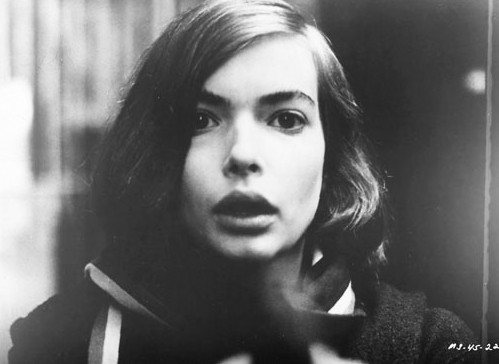 ★★★★★
★★★★★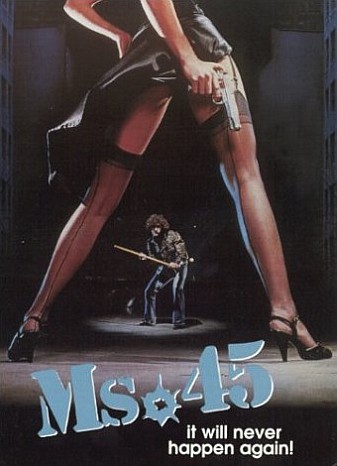
 Abel Ferrara is one of the most interesting of American film-makers, with an uncompromising vision that has seen him almost entirely shut out of mainstream cinema: the closest he’s come to a Hollywood movie was his Invasion of the Body-Snatchers remake, which was a failure on just about every level. Instead, he’s been on the outside, looking in, with films that range from the brilliant to the near-unwatchable. You never know what you’re going to get. It can be something raw and amazing, like Bad Lieutenant, or it can be a garbled, self-indulgent mess, such as his attempt to adapt William Gibson’s New Rose Hotel.
Abel Ferrara is one of the most interesting of American film-makers, with an uncompromising vision that has seen him almost entirely shut out of mainstream cinema: the closest he’s come to a Hollywood movie was his Invasion of the Body-Snatchers remake, which was a failure on just about every level. Instead, he’s been on the outside, looking in, with films that range from the brilliant to the near-unwatchable. You never know what you’re going to get. It can be something raw and amazing, like Bad Lieutenant, or it can be a garbled, self-indulgent mess, such as his attempt to adapt William Gibson’s New Rose Hotel.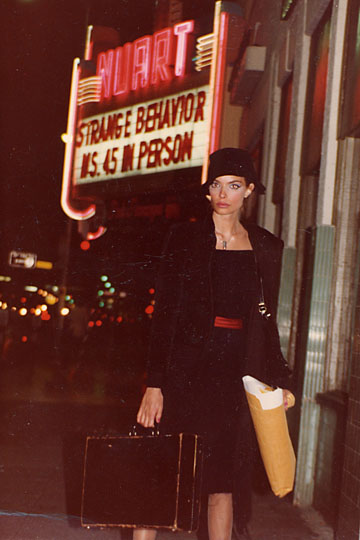 Hmm. While I can acknowledge the political subtext in Thana’s muteness [especially since it appears largely to be psychological, going by the last scene], I’m not quite sure how seriously I take this claim overall, given Ferrara actually plays one of the rapists, and a large percentage of the time is spent objectifying and fetishizing his lead actress, to the extent where Chris felt she looked like a supporting actress in a Robert Palmer video. Perhaps the most memorably instance of this is Thana, dressing up as a nun – but one that also wears stocking and suspenders – before heading out to a Halloween party. With her blood-red lipstick, she kisses each of the bullets before loading them into her gun, a sequence which tells us much about Ferrara’s repressed Catholicism [also apparently rampant in Lieutenant, where both Ferrara and Lund worked on the script], as well as paying homage to the other great New York street-sweeper, Travis Bickle from Taxi Driver.
Hmm. While I can acknowledge the political subtext in Thana’s muteness [especially since it appears largely to be psychological, going by the last scene], I’m not quite sure how seriously I take this claim overall, given Ferrara actually plays one of the rapists, and a large percentage of the time is spent objectifying and fetishizing his lead actress, to the extent where Chris felt she looked like a supporting actress in a Robert Palmer video. Perhaps the most memorably instance of this is Thana, dressing up as a nun – but one that also wears stocking and suspenders – before heading out to a Halloween party. With her blood-red lipstick, she kisses each of the bullets before loading them into her gun, a sequence which tells us much about Ferrara’s repressed Catholicism [also apparently rampant in Lieutenant, where both Ferrara and Lund worked on the script], as well as paying homage to the other great New York street-sweeper, Travis Bickle from Taxi Driver.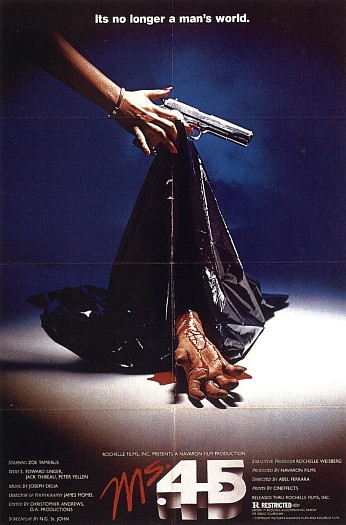 There are certainly holes in the plot logic. Where is Thana getting all the bullets from, and why is she such a crack-shot, despite presumably having never having handled a gun before? Yet these are in step with the pitch-black tongue-in-cheek humour the film contains: witness the long, rambling monologue inflicted on Thana by a guy she meets in a bar [her muteness making her the ultimate good listener]. I laughed like a
There are certainly holes in the plot logic. Where is Thana getting all the bullets from, and why is she such a crack-shot, despite presumably having never having handled a gun before? Yet these are in step with the pitch-black tongue-in-cheek humour the film contains: witness the long, rambling monologue inflicted on Thana by a guy she meets in a bar [her muteness making her the ultimate good listener]. I laughed like a 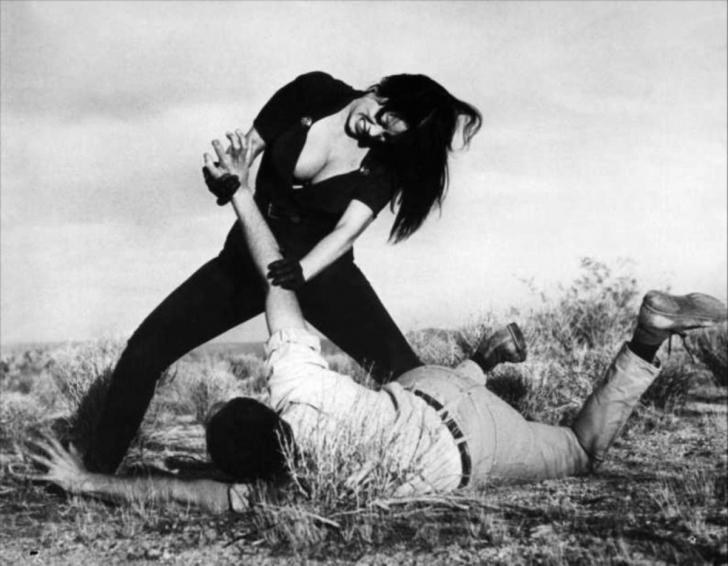
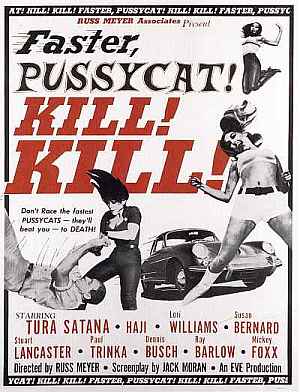
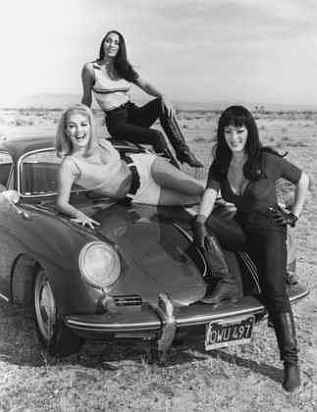 Often neglected are the male contributors, in particular Stuart Lancaster as the target of their scheme. Though confined to a wheelchair, he rules his twisted clan with a rod of iron; in many ways, this is an ancestor of the family from Texas Chainsaw Massacre, with ‘the vegetable’ – as even his own father refers to him – a kinder, gentler version of Leatherface. Seeing the old man slobbering over Linda certainly shifts the audience, and helps to turn the murderous Varla and the other girls from villains into heroines, even as they progress their plan of robbery, because you sense their fate could end up being worse than death.
Often neglected are the male contributors, in particular Stuart Lancaster as the target of their scheme. Though confined to a wheelchair, he rules his twisted clan with a rod of iron; in many ways, this is an ancestor of the family from Texas Chainsaw Massacre, with ‘the vegetable’ – as even his own father refers to him – a kinder, gentler version of Leatherface. Seeing the old man slobbering over Linda certainly shifts the audience, and helps to turn the murderous Varla and the other girls from villains into heroines, even as they progress their plan of robbery, because you sense their fate could end up being worse than death.

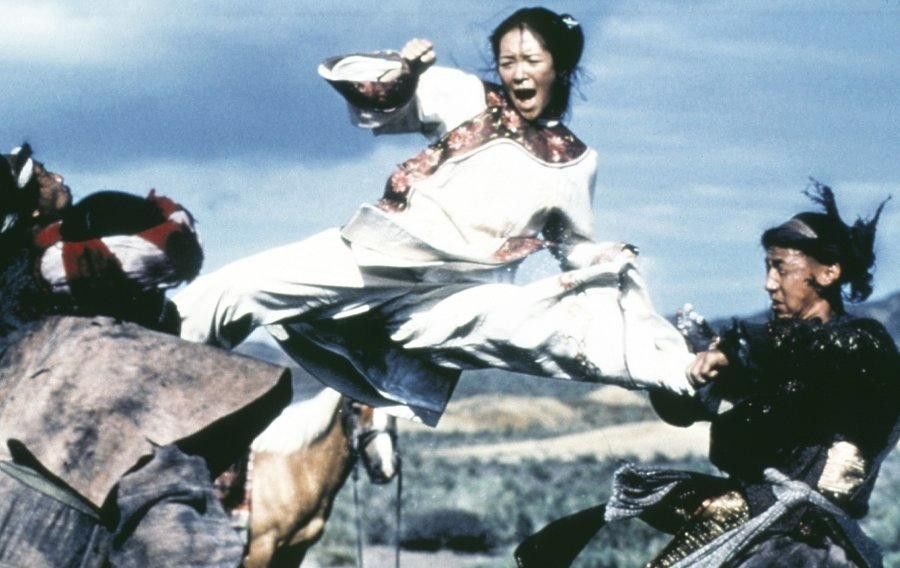
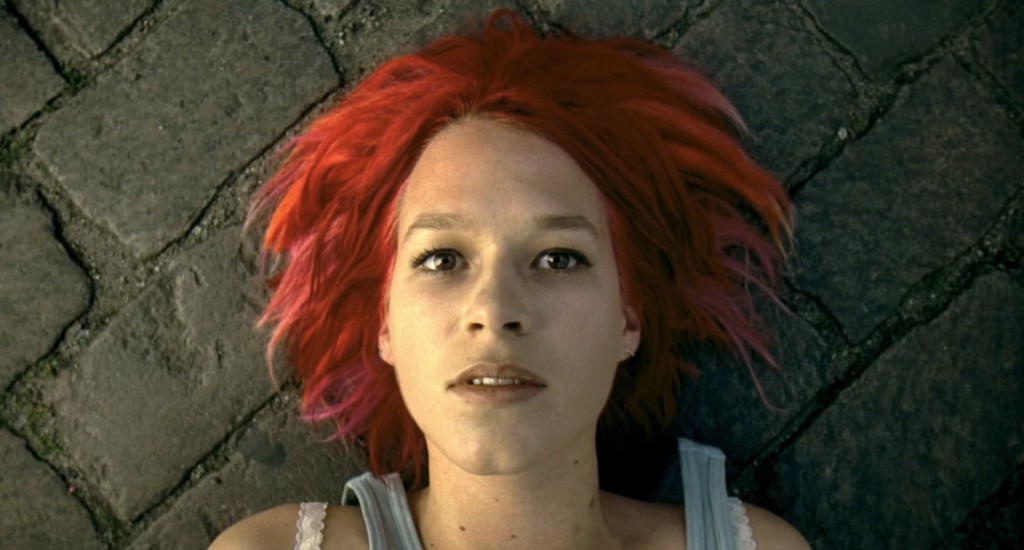
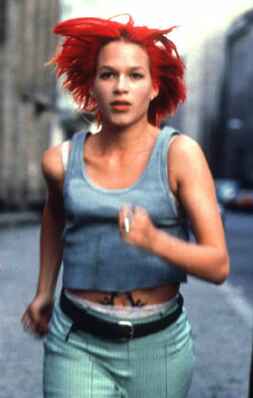
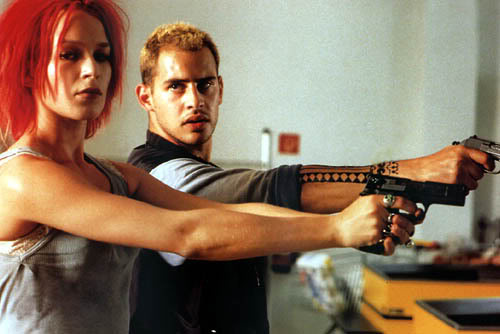
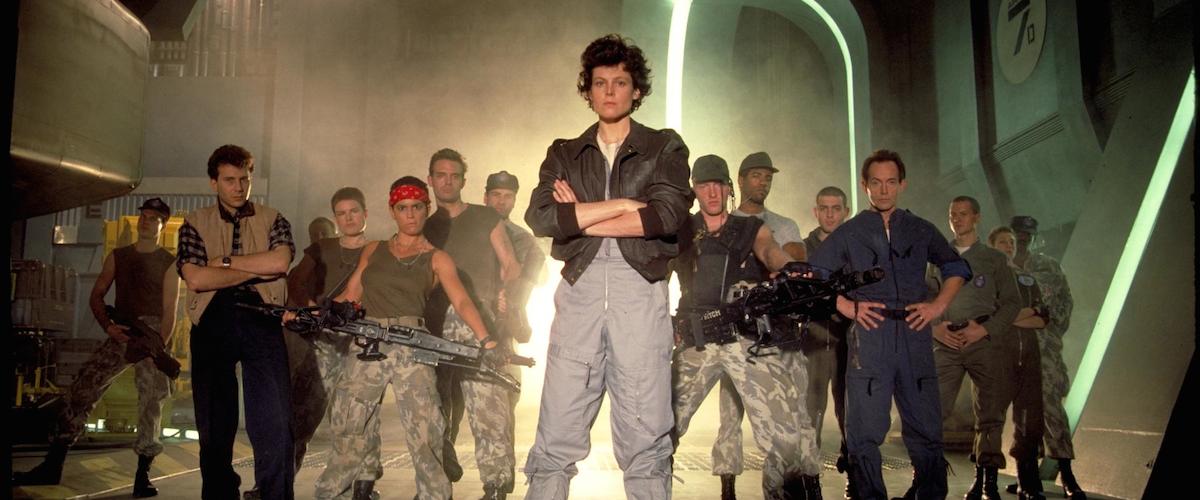 ★★★★★
★★★★★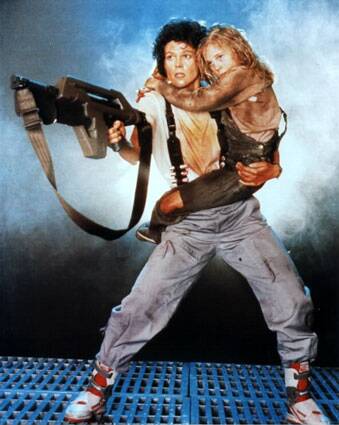 For in many ways, this is a Vietnam allegory. A technologically superior, arrogant military force lands in foreign territory…and gets its butt kicked by a ferocious enemy with no moral qualms, while the non-combatants are happy to plot their demise in pursuit of some other cause. It is likely also significant that Cameron worked on First Blood, Part II, which is perhaps why some reviewers e.g. the Philadelphia Daily News, referred to Aliens as “Rambo in space”.
For in many ways, this is a Vietnam allegory. A technologically superior, arrogant military force lands in foreign territory…and gets its butt kicked by a ferocious enemy with no moral qualms, while the non-combatants are happy to plot their demise in pursuit of some other cause. It is likely also significant that Cameron worked on First Blood, Part II, which is perhaps why some reviewers e.g. the Philadelphia Daily News, referred to Aliens as “Rambo in space”.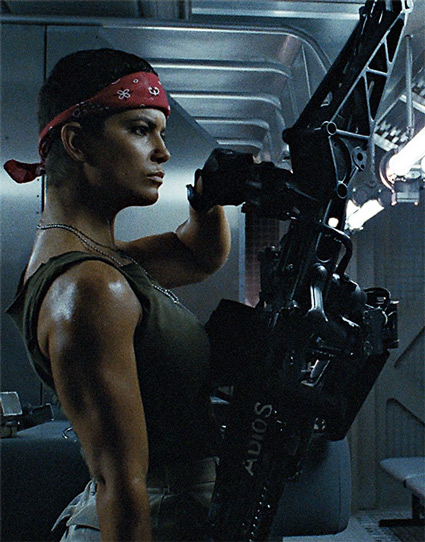
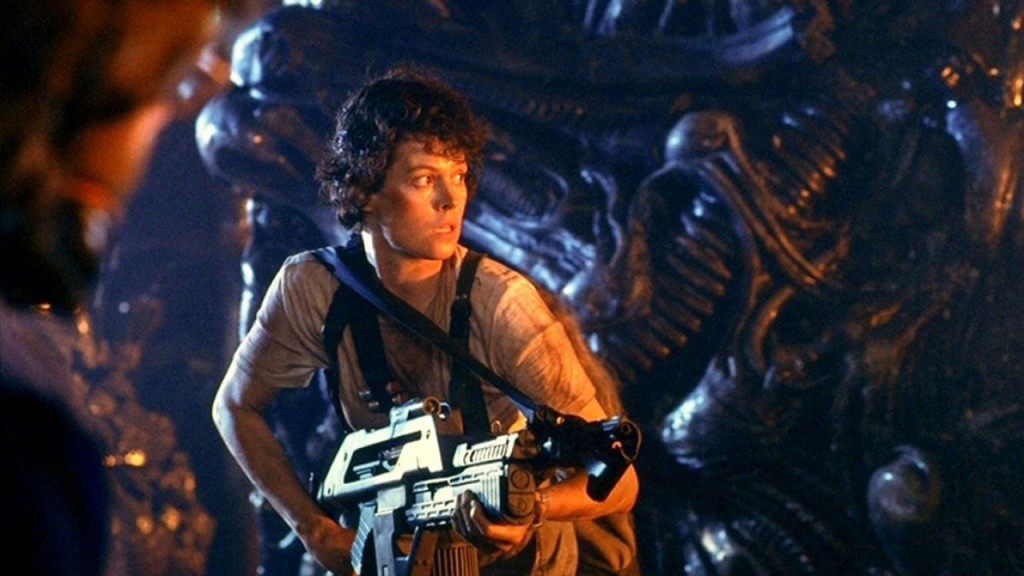
 I usually start watching this in a sense of disbelief, since it’s certainly not the most immediately convincing of movies. However, there’s a point near the middle which has in quick succession an amazing action sequence and two revelations, one touching, one tragic, and I realise that I am, yet again, utterly buying into the characters, storyline and setting. Disbelief simply ceases to be an option, and by the end, I know why this is among my all-time favourites, not just in the action heroine genre, but among all cinema.
I usually start watching this in a sense of disbelief, since it’s certainly not the most immediately convincing of movies. However, there’s a point near the middle which has in quick succession an amazing action sequence and two revelations, one touching, one tragic, and I realise that I am, yet again, utterly buying into the characters, storyline and setting. Disbelief simply ceases to be an option, and by the end, I know why this is among my all-time favourites, not just in the action heroine genre, but among all cinema.